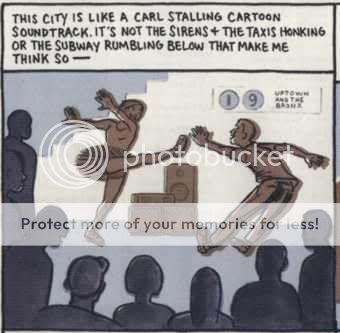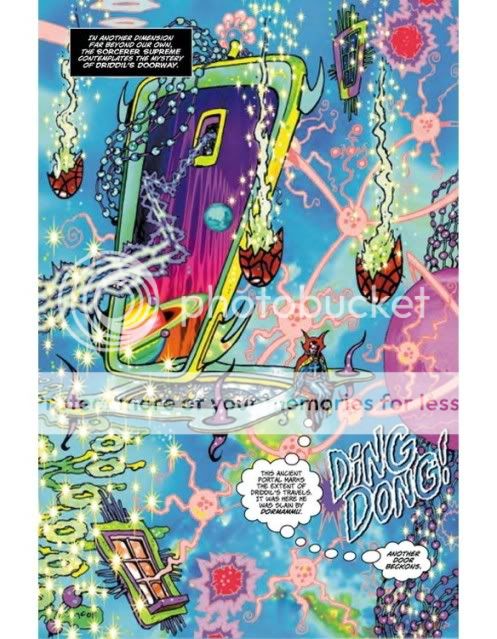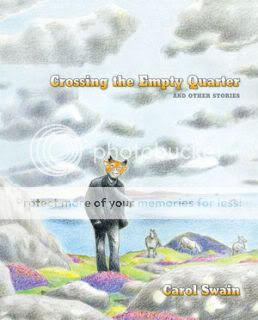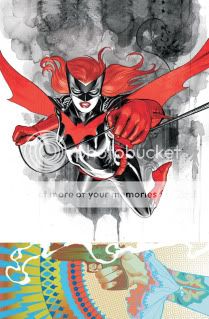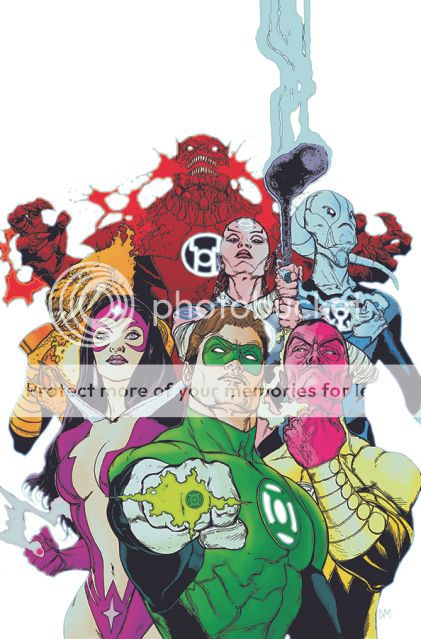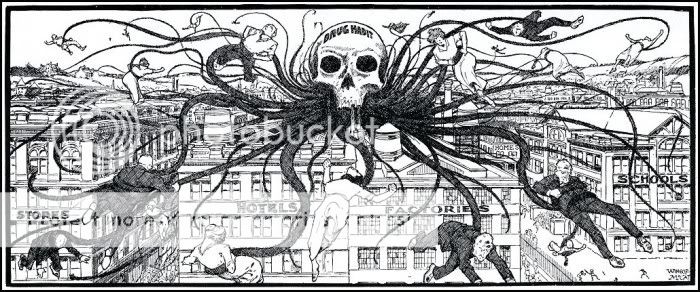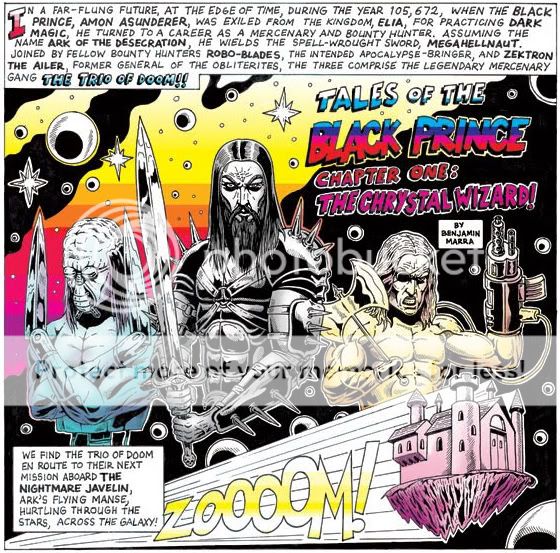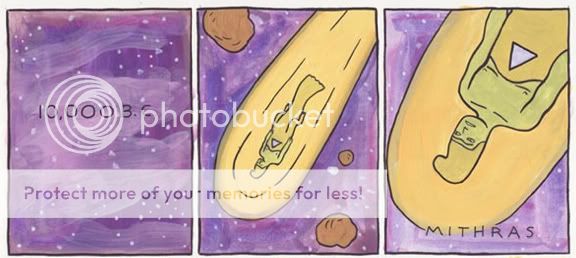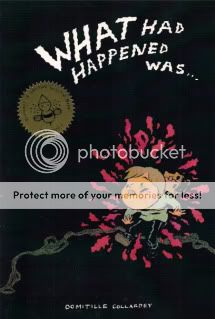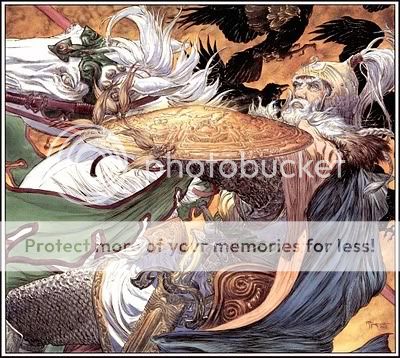So the Battlestar Galactica prequel series Caprica debuts this Friday night. Sort of: They did that weird SciFi/Syfy double-dip where they released the “uncut” pilot on DVD first and show it on TV months later. That’s what they did for the stand-alone BSG movie Razor (I think; it’s possible they premiered around the same time), and that’s what they did for the show’s movie-length epilogue, The Plan. But I guess my TiVo didn’t recognize it as part of my Battlestar season pass, because I have no idea when it actually aired. It was only hearing that Caprica was finally ready to blow that made me watch my DVD copy in the first place.
Given my level of Battlestar Galactica fandom generally and my enthusiasm for its extremely divisive ending particularly, that’s kind of weird, right? But maybe it’s not. I was deeply satisfied by the BSG finale–like, almost spiritually satisfied by it. It was a take on apocalypse and cultural extinction I’d never seen before–a people sacrificing their nominal legacy in hopes that a true legacy of peace, free from the sins of the past, might someday be inherited by their unknowable descendants. Also, Starbuck was an angel. You can check io9 or Tor.com for the vitriolic C.W. on these developments; I loved them, was powerfully moved and shaken by them. The idea of watching a new episode of Battlestar after that, no matter how many “answers” it promised to provide, was just…anticlimactic.
To their credit, writer Jane Espenson and director (and supporting player) Edward James Olmos seem to realize that. The Plan isn’t the fill-in-the-blanks everything-you-know-is-wrong blockbuster I had vaguely in mind. You might even see it as a bill of goods. Turns out the only “plan” the whole “and they have a plan” bit was referring to was just “they would like to kill all the humans.” Um, surprise?
What you do find out that you didn’t know before is that the Brother Cavil who lived in the fleet, the one to whom the Chief came when he thought he might be a Cylon way back when, was orchestrating the fleet-based Cylons’ various attempts at murder and mayhem. So you see how Boomer got her instructions when she was a sleeper agent–it wasn’t internal programming, it was orders she received from Cavil, who then put her back under to fulfill her missions. You find out how Leoben became obsessed with Starbuck. You find out where that phony Defense Department Six came from when she tried to frame Baltar for the crime he actually committed, and where she went afterwards. (I think she was airlocked.) You find out why the Five who suicide-bombed himself did it. You get some back-up for the way multiple copies of the same Cylon roamed around the fleet without getting caught, and why. You find out who Caprica Six was meeting on Caprica before the attack, and you find out that yes, it was Baltar who passed Adama the note about the 12 Cylon models.
In addition, there are some comic-book-tie-in-style new storylines introduced. There’s a Four in the fleet, and he has a human family he doesn’t want to destroy; there’s a Four in Anders’s little group of survivors back on Caprica, too, and by contrast he wants that group’s Cavil to pull his thumb out and get to murdering. And the two Cavils come to very different conclusions about the Cylons’ attempted extermination of man, which is sort of the philosophical crux of the episode. (It’s hard not to call it that.) These are welcome developments in that Dean Stockwell becomes the star of the show, while Rick Worthy, always the most underused of the Cylon actors, finally gets a chance to do something with his sinister warmth. But again, none of it gives you the “a-HA, so THAT’S what was going on!” feeling you might have expected.
And so. We can question the wisdom of prefacing every episode of your show by referring to a Plan but never, in fact, having one, and then not even bothering to make it up in time for the finale, so that you have to create an almost anthology-style appendix to the show and air it months after the fact. Moreover, you can question the weirdness of the execution of that enterprise. In the opening credits there’s a line about how the film is “based on the series Battlestar Galactica created by Ronald D. Moore” or something like that, as if it’s not even technically a piece of the series. Moore isn’t the only MIA figure, either–try half the cast. Apollo, Starbuck, and Baltar appear only in repackaged footage from the original episodes. Despite the movie being about the Cylons, Lucy Lawless’s D’Anna has approximately three seconds of flashback screentime. Most bizarrely, Mary McDonnell’s President Roslin doesn’t appear on-screen at all; in an unintentionally hilarious bit at the very end, you see the legs, and only the legs, of a character I assume is supposed to be Roslin descending a ladder. Roslin’s absence also makes it next to impossible for there to be much Tory material in the movie–her involvement amounts to crashing her car when the bombs hit, getting rescued, and then walking down that ladder. Finally, because this was a straight-to-DVD release, there’s a bunch of entirely gratuitous nudity. (And no, not from anyone you’d already decided you wanted to see naked.) It’s a weird project, in other words, and the seams of its production show.
But here as always, for me, Battlestar Galactica is all about the delivery. Not the mythology or the mysteries, which were all kind of a convoluted, contradictory mess when all was said and done (this ain’t an Alan Moore comic, it’s not even Lost), but exploration and observation, through writing and acting, of how individuals and societies deal with catastrophe. And on that score, The Plan came through. It’s essentially a big ol’ tone poem about murder and suicide. Character after character comes to the point where they must kill, and then they do or they don’t, and we see what that does to them. That’s pretty much it in a nutshell, and to say it’s down my alley is to understate the case considerably. I mean, find me a Blue Velvet fan who doesn’t want to watch a movie in which Dean Stockwell orchestrates a series of cold-blooded murders, culminating in a particularly ugly and taboo one he commits himself.
Aside from some clunky theological dialogues between Anders and Cavil, Espenson mostly stays out of the way of these parameters. Given that her last episode was nearly series–ruining in its awfulness, her redemption arc is perhaps The Plan‘s standout. Meanwhile, Olmos, who established himself as one of the series’ finest directors with the episode in which Baltar was tortured, acquits himself equally admirably here. He lets silence and image do the talking a lot of the time–following nuclear payloads to their destination, following mushroom clouds into the sky, following battlestars as they drift and burn, following airlocked bodies as they freeze and float, following bodies as they fall.
It’s in this way that The Plan dodges the knockout punch thrown by the series finale proper. (Actually, I think you could comfortably stick it within the finale–pop the DVD out after the climactic shootout and the final jump; watch The Plan; put the finale back in and finish it up.) If “Daybreak” was about human and Cylon abandoning their horrific legacy, The Plan IS that horrific legacy. A gutsy choice, leaving that as the final taste in our mouth…and yet it tastes delicious.
